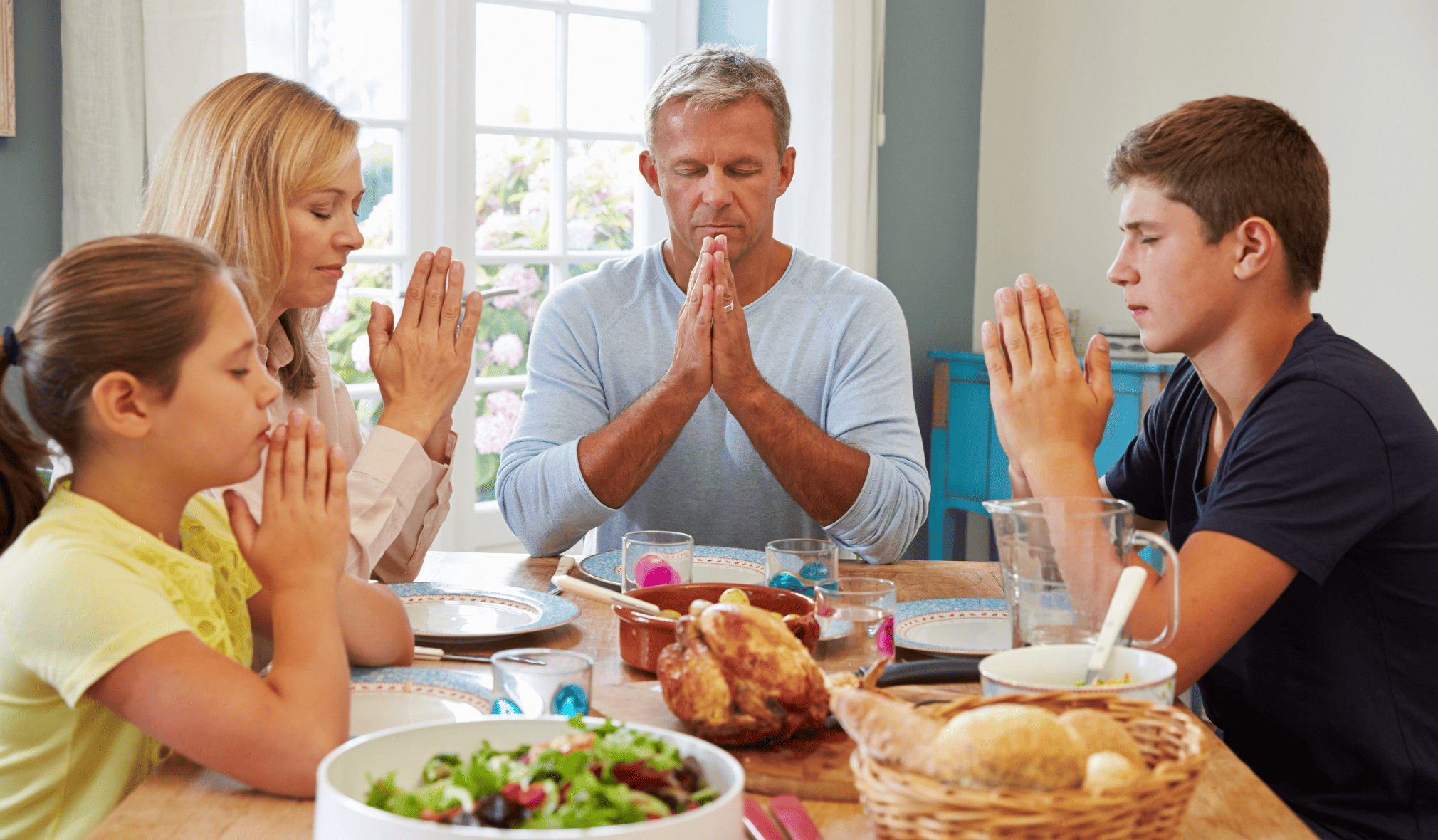Modelling prayer in the home

‘Love the Lord your God with all your heart and with all your soul and with all your strength. These commandments that I give to you today are to be on your hearts. Impress them on your children. Talk about them when you sit at home and when you walk along the road, when you lie down and when you get up. Tie them as symbols on your hands and bind them on your foreheads. Write them on the doorframes of your houses and on your gates.’ Deuteronomy 6:5-9
‘Once Jesus was in a certain place praying. As he finished, one of his disciples came to him and said, “Lord, teach us to pray, just as John taught his disciples.”’
Luke 11:1
Modelling prayer in our homes should help our children learn that prayer is vital to us, that God is the most important person and that they can have a living relationship with Him that impacts all aspects of their lives.

To effectively model prayer in our homes prayer needs to be made a priority in the home. Life gets busy and complicated and if we’re not making prayer an intentional part of each day then our relationship with God can suffer and our kids' relationships with God can suffer.
Helping kids to be comfortable praying to Father God rather than just having the ability to say prayers. There are many ways to model prayer to our kids, I have touched on just a few below. Have conversations about prayer with your child. Asking for their perspective and understanding and unpacking what prayer is together.
Some questions you could ask to get a prayer conversation started:
- Why do you think it is important to pray?
- Why might God want us to pray?
- What are some new ways we might pray in our family?
- What do you think happens when we pray? What difference does it make?
- Who/what do you want to add to our prayer list? (Write this list together. Small children can draw a picture).

The ACTS Prayer Method – “If you aren’t familiar with this method, it is such a simple way to grow your prayer life. It emphasises rounding out your prayer to include Adoration, Confession, Thanksgiving, and Supplication (requests). Prayer is meant to be more than just a list of things you want God to do in your life or provide you with. Those requests have a place, but God’s role is so much more than just giving us what we need/want.” (Steffen D.)
Routine prayers – are a great opportunity to teach our kids to structure their days around God. It is easy for meal and bedtime prayers to become repetitive words and phrases that over time do not promote a deeper relationship with God. A few ways to work towards making our prayer times authentic and real are to pray for different things at the routine prayer times; for example, at breakfast time you could pray for a missionary family or group across the globe, at dinner time prayer could include government leaders, church leaders or the kids' school teachers. Bedtime prayer is a great time to talk with your kids about the favourite parts of their day and the times that they were worried or scared and then pour these things out to God in prayer. I often ask my kids if they would like to pray at these times, sometimes they want to and sometimes they don’t – it’s important to create a safe prayer environment based on love and respect, no shaming or guilt, just time spent with God without pressures or restrictions.
Within these routine times can also be moments for you to encourage prayer to be an experience for your kids to engage with God. Allow time for your child to listen to what God might be saying to them through His Holy Spirit.

Any-time prayers – an ongoing conversation throughout the day. These prayers are my favourite to model to my kids as they are unscripted and occur naturally in any environment. My 5-year-old son split his forehead open a few weeks ago and needed stitches. He was anxious and upset on the drive to the doctor's so I asked him if he wanted me to pray and he said yes. I prayed a simple prayer asking for God’s peace and comfort to be upon him and for God to change the atmosphere around us to be one of calm. We often pray in moments like this and I find that my kids more often than not choose to pray themselves and come out with heartfelt and specific petitions to God about their lives and experiences; first days of school, scary dentist appointments, sore tummies or trips to the emergency room are all opportunities to take a moment and ask God to engage with us and our little ones.
Praying into a situation – if something is difficult or unsettling in our lives and we pray about it, our kids will notice, if we don’t bring it before God, our kids will notice. When there is something stressful in our lives (financial trouble, illness, job issues, big decisions, etc) and we model honest prayer, our kids learn that we can bring our stressful situations to God and ask for His help and peace.

I hope that this Blog post has given you a few new ideas to try in modelling prayer in your home. I pray that God’s peace and rest is upon you and your family as you draw closer to Him.
KATE GRAINGER


